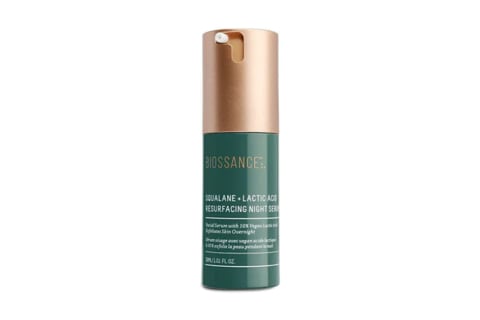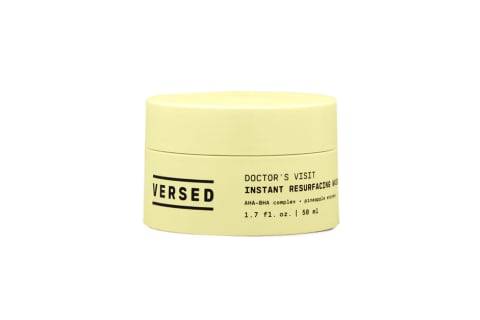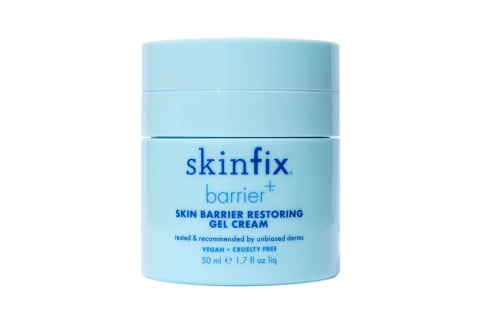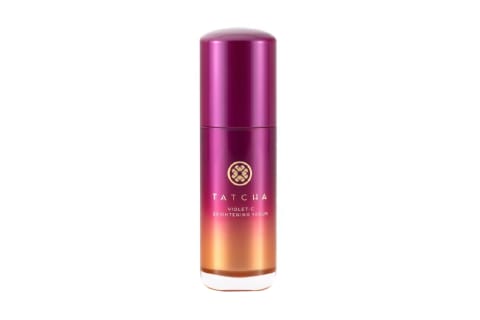However, having textured skin from things like acne scars or skin conditions can make you feel extremely insecure and directly impact your mood. So, it’s only natural that you may want to ease texture when possible. To help you out, we asked derms for their best tips and tricks. Plus, a bit more about why your skin might be textured in the first place. Eczema (also known as atopic dermatitis) can also cause uneven skin texture. This can look like scaly, dry patches or thicker skin (similar to that of rosacea). Plus, both skin conditions can cause excessive dryness on the skin, which is another form of texture. When treating texture from rosacea or eczema, you should consult your dermatologist. Many of the over-the-counter methods that are marketed for smoothing texture might irritate these highly sensitive skin types. “It’s a sign of sun damage and aging. Basically, as collagen and elastin are compromised, the pores are not held closed, leaving them larger and more visible,” Morgan Rabach, M.D., board-certified dermatologist and co-founder of LM Medical NYC previously said about orange peel skin. Everyone experiences a dip in collagen production as you age—at a rate of 1% each year3 after you hit your mid-20s. Given the decline, you may experience more skin texture with age. There’s an easy remedy for this one—more on that to come. The most popular of the AHA family are glycolic acid and lactic acid. “Glycolic acid, derived from sugar cane, is the smallest acid in size, meaning the molecule can get deep into the skin,” says Engelman. This makes it a go-to for breaking down and removing dead skin cells and particles. It also boosts collagen and elastin production. As for lactic acid, Engelman says it’s a good option for those with sensitive skin. It’s derived from sour milk and works to improve discoloration and age spots. However, retinol won’t work instantaneously. You’ll have to commit to using the product every few days for a good month or two before seeing peak smoothing results. “With continued usage of this ingredient and over time, you can see an improvement in fine lines, wrinkles, tone, and texture, as it is strengthening the skin barrier,” Engleman says. Now, there’s more than one kind of retinol to consider—so read up on the differences between over-the-counter forms and prescription-grade products here. In fact, vitamin C can help almost any skin issue you can think of, from dark spots and discoloration to combating rosacea4 and acne4 to wrinkles and sagging. This makes vitamin C a great addition to your skin care routine, even while you’re using other methods to ease texture. To mitigate inflammation on the skin, look to soothing topicals. A few of the best ingredients to keep an eye out for include: There are a few different methods to treating textured skin in the office—here’s a quick breakdown of some of the best. More specifically, research has shown that taking collagen peptides will support skin elasticity, hydration levels, and promote youthful texture8.* Not to mention, collagen can help support your gut health9, which is essential for easing inflammation from the inside out (yes your gut and skin are connected). To ease your search, here’s our curated list of the 9 best collagen supplements on the market, all backed by a nutrition Ph.D. For HA, that’s 1,000 times its weight in water. So, it’s really hydrating. “It helps smooth the skin surface due to increasing the amount of water in the dead cell layer, which delivers moisture to dry, rough skin surface,” Loretta Ciraldo, M.D., FAAD, tells mbg. Consider this hydrating acid like a tall glass of water for your skin. You can choose to use it in the form of a serum (like one of these mbg-approved picks) or look for hyaluronic acid in your moisturizers and face creams. See when you visit a skin expert like an esthetician, they can help clear your dead skin cells via gentle exfoliation to reveal a fresh new canvas. Plus, the high-tech tools and professional-grade topicals might help you clear your texture even more quickly. If you want to learn more about the different types of facials and which ones might be the best for your skin, check out this guide. These are particularly beneficial for those with eczema and rosacea, as classic exfoliants like AHAs and BHAs might be irritating for highly sensitive skin. Especially if you’re putting time and effort into clearing your skin, you’ll want to do basic maintenance as well. Here are a few tips to keep in mind: Visiting a dermatologist can be immensely helpful for stubborn texture, like that of acne scars or even severe cases of rosacea that need to be treated with pro-grade treatments. Of course, trying at-home remedies first is a good idea, but visiting the experts might be just what your skin needs.







